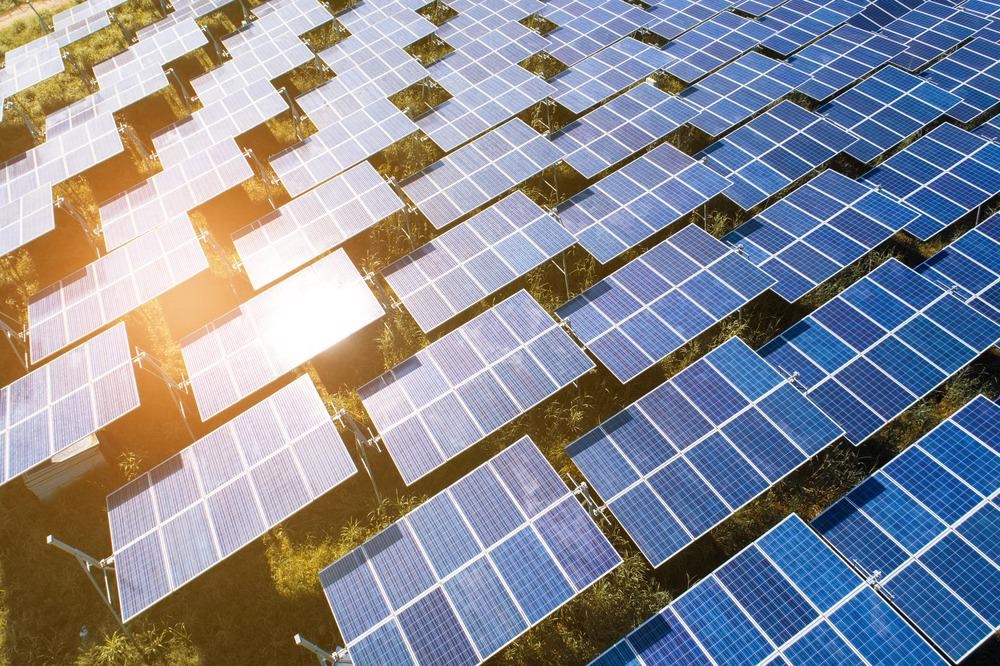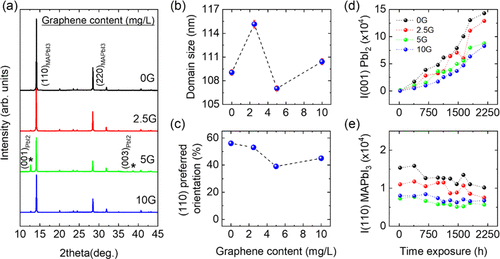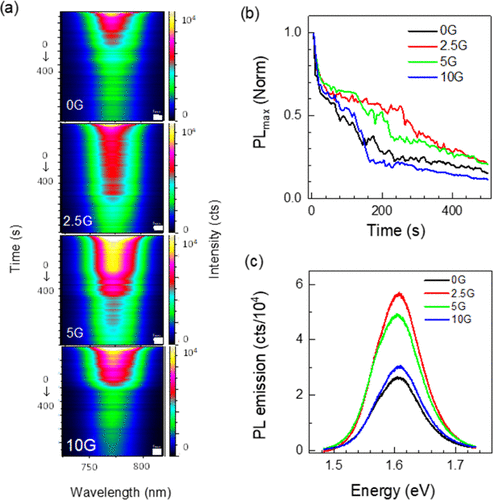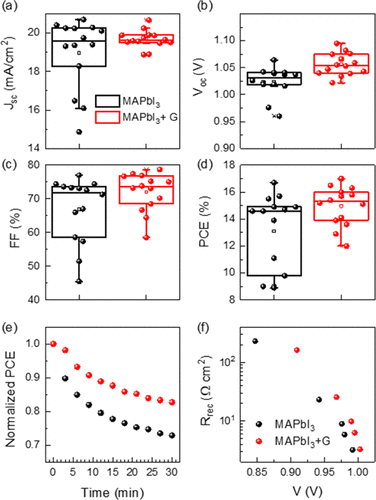Solar energy is the focus of significant research and technological development due to its ability to harvest cheap, abundant energy from our sun. The solar energy industry of the future will require materials with superior properties, and recently metal halide perovskites have emerged as potential materials for this purpose. Now, a paper published online in ACS Applied Energy Materials has explored making improvements to perovskite solar cells using pristine graphene.

Study: Effect of Pristine Graphene on Methylammonium Lead Iodide Films and Implications on Solar Cell Performance. Image Credit: Thongsuk7824/Shutterstock.com
Harvesting Energy from the Sun
Energy demand is increasing as the world becomes more developed. For centuries, the human race has relied on fossil fuels to provide its energy needs, but this comes at an environmental cost with increasing carbon emissions and pollution. Solar energy has emerged as a prime renewable power source due to the limitless energy that can be harvested from the sun.
Solar cells can suffer from efficiency and performance issues, necessitating research into materials with enhanced properties.

(a) XRPD profiles (Cu Kα1/α2) of the 0G–10G MAPbI3 films at 300 K. The asterisks indicate the impurity of PbI2. (b) Variation of the average crystal domain size of the MAPbI3 films with the graphene content. (c) Preferred orientation-graphene concentration relationship of the MAPbI3 films. Time evolution of (d) (001) reflection intensity of the PbI2 degradation product and (e) (110) reflection intensity of MAPbI3. Image Credit: Redondo-Obispo, C et al., ACS Publications
Perovskite Solar Cells: The Future of Solar Energy Harvesting?
Solar cells using metal halide perovskites have been extensively studied in recent years for their superior performance and enhanced properties. Experimental studies have demonstrated that these materials can achieve a power conversion efficiency of 25.5%. In just over a decade, perovskite solar cells have overtaken conventional solar harvesting technologies.
Perovskite solar cells exhibit long charge carrier diffusion lengths, high absorption coefficient, low exciton binding energy, and other advantageous properties that make them a choice for future energy harvesting devices. They can be manufactured with low-temperature and cost-effective methods such as solution processing.
However, there are some key technical challenges that need to be overcome if perovskite solar cells are to become a widespread commercially viable technology. A major drawback of these solar cells is environmental instability. They can be degraded by air, moisture, UV light, electrical fields, and temperature. Overcoming this issue has been the subject of intense research in recent years.
Using Graphene to Improve the Performance of Perovskite Solar Cells
Significant advances in perovskite solar cell performance have been made due to improvements in device architecture and materials. A promising material that has been explored recently is graphene due to its unique properties.
Graphene is hydrophobic, which can enhance several properties of perovskite solar cells. Firstly, it can enhance stability and the passivation of electron traps at the perovskite’s crystalline domain interfaces. Graphene can also provide better energy level alignment, leading to more efficient devices.

(a) PL spectra evolution with time up to 400 s for the undoped MAPbI3, 0G, and G-doped MAPbI3 as 2.5G, 5G, and 10G thin films under irradiation with λexc = 488 nm and Pinc = 18 W/cm2. (b) Normalized time evolution of the PL maximum intensity during 500 s and (c) PL emission spectra at 250 s of irradiation. Image Credit: Redondo-Obispo, C et al., ACS Publications
Recent research has shown that the incorporation of graphene-related materials improves the performance and stability of perovskite solar cells, which will help realize the commercial potential of these devices. For example, covering metal halide perovskites with a 2D monolayer of graphene helped devices maintain their optical properties after exposure to humidity and temperature.
Several different graphene-related materials have been explored in research projects over the last few years. These include reduced graphene oxide, graphene quantum dots, graphene oxide, and pristine graphene. Each of these materials has different properties and behaviors.
Pristine Graphene and Lead Iodide Perovskite Solar Cells
In the research published in ACS Applied Energy Materials, the team used pristine graphene to improve the properties of MAPbI3, a popular perovskite material. Pristine graphene was combined with the metal halide perovskite to form the active layer of the solar cells. By analyzing the resulting graphene/perovskite material, it was observed that an average efficiency value of 15% under high-stress conditions was achieved when the optimal amount of graphene was used.

(a–d) Statistical results, average value (open square), and standard deviation of the resulting photovoltaic parameters for ITO/SnO2/perovskite/spiro-OMeTAD/Au devices with 0G (no graphene) and with graphene, 2.5G active layers. (e) Normalized PCE evolution of the non encapsulated device under continuous AM1.5G illumination under ambient conditions (T = 25 °C, RH ∼ 40–60%). (f) Recombination resistances, Rrec, from impedance spectroscopy measurements. Image Credit: Redondo-Obispo, C et al., ACS Publications
Additionally, pristine graphene-enhanced the perovskite’s recombination resistance. It also improves the stability of the perovskite active layer, reducing negative environmental effects on the material. Using pristine graphene retained over 80% of the original efficiency of the perovskite, whereas without graphene it was 73%. The results were discussed in terms of modifications of the material’s morphological, structural, electronic, and optical properties.
By tuning and balancing the graphene content led to enhanced photovoltaic characteristics. Final photoconversion efficiency is increased, degradation is delayed, grain size is increased, and nonradiative recombination is reduced. The team concluded that this was due to partial sealing of grains without significant changes in their morphology and enhanced porosity.
What is the Future?
The results of this study demonstrate that doping lead iodide perovskite materials with layers of pristine graphene improves the overall stability and electrical performance of perovskite solar cells. The research provides a significant stepping stone for the future use of pristine graphene and other graphene-based materials to create low-cost and efficient graphene/perovskite photovoltaic solar cells.
Further Reading
Redondo-Obispo, C et al. (2021) Effect of Pristine Graphene on Methylammonium Lead Iodide Films and Implications on Solar Cell Performance [online] ACS Publications. Available at: https://pubs.acs.org/doi/full/10.1021/acsaem.1c02738
Disclaimer: The views expressed here are those of the author expressed in their private capacity and do not necessarily represent the views of AZoM.com Limited T/A AZoNetwork the owner and operator of this website. This disclaimer forms part of the Terms and conditions of use of this website.